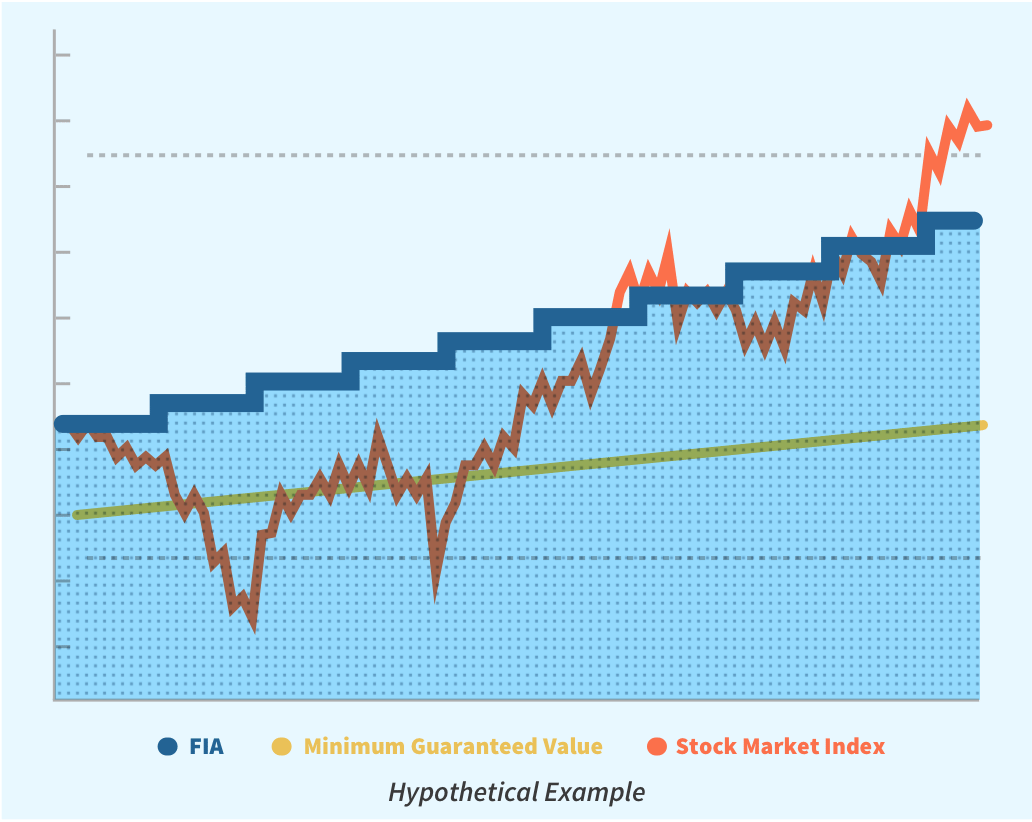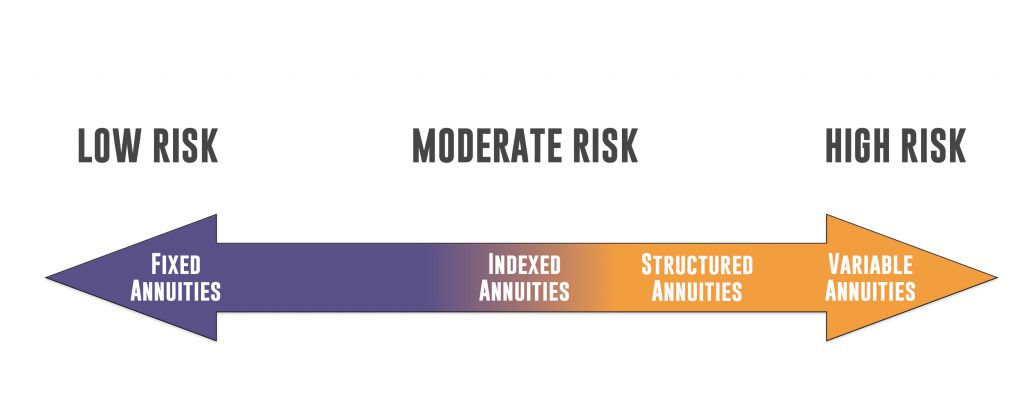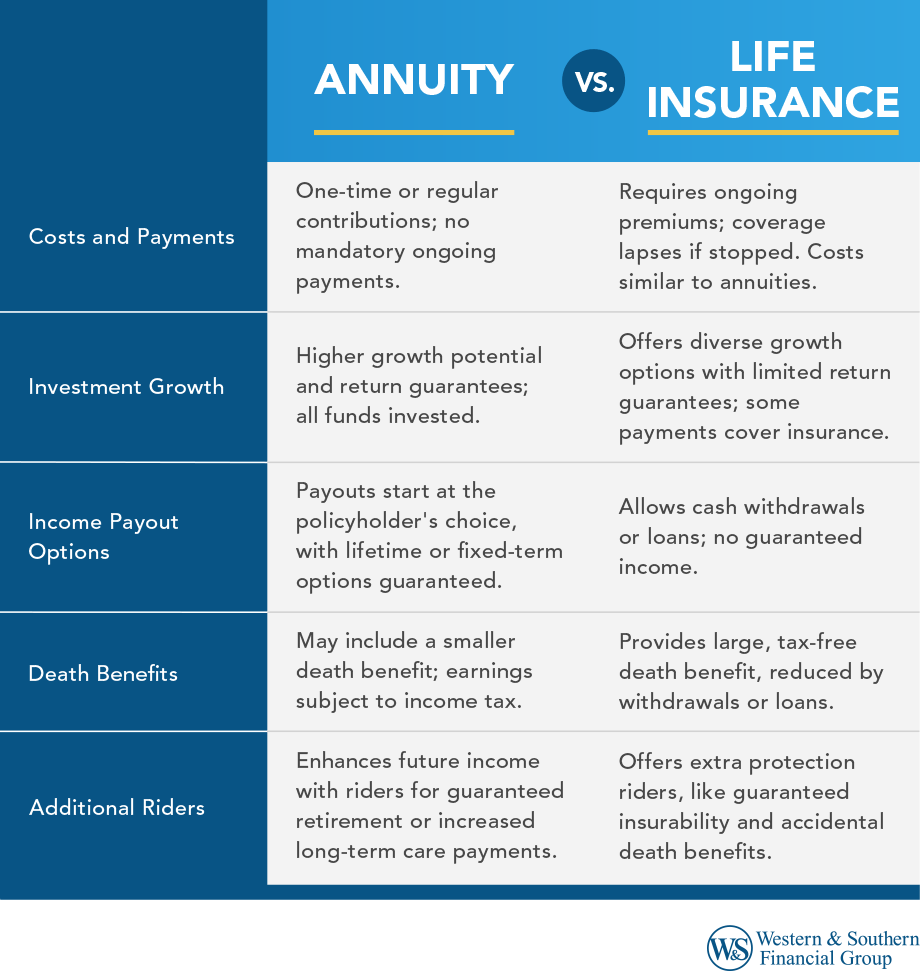Featured
Table of Contents
There are 3 sorts of annuities: taken care of, variable and indexed. With a dealt with annuity, the insurance provider assures both the rate of return (the rate of interest) and the payment to the financier. The interest rate on a fixed annuity can alter gradually. Often the rate of interest is repaired for a variety of years and after that changes periodically based on current rates.
With a deferred set annuity, the insurance policy firm concurs to pay you no much less than a specified rate of rate of interest during the time that your account is growing. With an immediate fixed annuityor when you "annuitize" your delayed annuityyou obtain an established fixed amount of cash, normally on a monthly basis (comparable to a pension).
While a variable annuity has the benefit of tax-deferred development, its annual expenses are likely to be a lot more than the expenses of a normal common fund. And, unlike a dealt with annuity, variable annuities don't supply any assurance that you'll gain a return on your investment. Rather, there's a danger that you can actually lose cash.
Breaking Down Tax Benefits Of Fixed Vs Variable Annuities Everything You Need to Know About What Is A Variable Annuity Vs A Fixed Annuity Defining the Right Financial Strategy Features of Smart Investment Choices Why Pros And Cons Of Fixed Annuity And Variable Annuity Can Impact Your Future How to Compare Different Investment Plans: Explained in Detail Key Differences Between Annuity Fixed Vs Variable Understanding the Risks of Long-Term Investments Who Should Consider Strategic Financial Planning? Tips for Choosing Immediate Fixed Annuity Vs Variable Annuity FAQs About Variable Vs Fixed Annuity Common Mistakes to Avoid When Planning Your Retirement Financial Planning Simplified: Understanding What Is Variable Annuity Vs Fixed Annuity A Beginner’s Guide to Smart Investment Decisions A Closer Look at How to Build a Retirement Plan
Due to the intricacy of variable annuities, they're a leading resource of capitalist complaints to FINRA. Before buying a variable annuity, carefully checked out the annuity's prospectus, and ask the individual offering the annuity to describe every one of the item's attributes, cyclists, expenses and restrictions. You should likewise recognize how your broker is being compensated, including whether they're receiving a compensation and, if so, just how much.
Indexed annuities are complicated economic tools that have features of both repaired and variable annuities. Indexed annuities generally provide a minimum surefire rate of interest integrated with a rates of interest linked to a market index. Several indexed annuities are tied to wide, popular indexes like the S&P 500 Index. Some use various other indexes, consisting of those that stand for other segments of the market.
Understanding the functions of an indexed annuity can be confusing. There are a number of indexing techniques companies utilize to determine gains and, as a result of the variety and complexity of the techniques used to debt rate of interest, it's hard to contrast one indexed annuity to an additional. Indexed annuities are normally categorized as one of the following 2 kinds: EIAs provide an assured minimum rate of interest (typically a minimum of 87.5 percent of the costs paid at 1 to 3 percent interest), along with an added rates of interest linked to the efficiency of one or more market index.

Conventional financiers that value safety and security and security. Those nearing retirement that intend to shelter their properties from the volatility of the stock or bond market. With variable annuities, you can buy a variety of protections consisting of supply and bond funds. Stock exchange performance identifies the annuity's worth and the return you will certainly get from the cash you spend.
Comfortable with changes in the supply market and want your financial investments to keep speed with inflation over an extended period of time. Youthful and intend to prepare economically for retirement by enjoying the gains in the stock or bond market over the long term.
As you're accumulating your retirement financial savings, there are numerous ways to stretch your cash. can be especially valuable financial savings tools due to the fact that they ensure an income amount for either a set amount of time or for the rest of your life. Repaired and variable annuities are 2 choices that offer tax-deferred growth on your contributionsthough they do it in different methods.
Breaking Down Your Investment Choices A Comprehensive Guide to Fixed Vs Variable Annuity Defining Fixed Vs Variable Annuity Benefits of Tax Benefits Of Fixed Vs Variable Annuities Why Choosing the Right Financial Strategy Can Impact Your Future How to Compare Different Investment Plans: How It Works Key Differences Between Different Financial Strategies Understanding the Rewards of Long-Term Investments Who Should Consider Variable Annuity Vs Fixed Annuity? Tips for Choosing Variable Vs Fixed Annuities FAQs About Planning Your Financial Future Common Mistakes to Avoid When Planning Your Retirement Financial Planning Simplified: Understanding Your Options A Beginner’s Guide to Smart Investment Decisions A Closer Look at Fixed Vs Variable Annuity
variable annuity or both as you outline out your retired life revenue plan. A gives a guaranteed rate of interest. It's thought about a conventional product, offering a moderate profits that are not connected to market efficiency. Your contract worth will certainly enhance because of the accrual of assured passion profits, meaning it won't shed value if the marketplace experiences losses.
An includes bought the stock market. Your variable annuity's investment efficiency will impact the dimension of your savings. It might ensure you'll receive a series of payments that start when you retire and can last the remainder of your life, provided you annuitize (begin taking payments). When you begin taking annuity repayments, they will certainly depend upon the annuity worth back then.
Market losses likely will cause smaller sized payments. Any type of rate of interest or various other gains in either kind of agreement are sheltered from current-year taxes; your tax obligation will certainly come when withdrawals start. Let's look at the core functions of these annuities so you can determine how one or both might fit with your total retirement method.

A fixed annuity's value will certainly not decline due to market lossesit's regular and secure. On the other hand, variable annuity worths will fluctuate with the performance of the subaccounts you choose as the marketplaces fluctuate. Incomes on your taken care of annuity will very rely on its gotten rate when bought.
Alternatively, payment on a taken care of annuity purchased when rates of interest are low are most likely to pay out incomes at a lower rate. If the rates of interest is assured for the length of the agreement, incomes will continue to be consistent no matter of the markets or price activity. A fixed rate does not suggest that repaired annuities are risk-free.
While you can not come down on a fixed rate with a variable annuity, you can choose to invest in traditional or aggressive funds customized to your threat degree. A lot more conservative financial investment alternatives, such as short-term mutual fund, can help in reducing volatility in your account. Because taken care of annuities provide a set rate, dependent upon existing rate of interest prices, they don't supply that same flexibility.
Breaking Down Your Investment Choices Everything You Need to Know About Financial Strategies Breaking Down the Basics of Investment Plans Benefits of Fixed Annuity Vs Equity-linked Variable Annuity Why Fixed Annuity Vs Equity-linked Variable Annuity Is a Smart Choice How to Compare Different Investment Plans: A Complete Overview Key Differences Between Different Financial Strategies Understanding the Rewards of Annuities Variable Vs Fixed Who Should Consider Fixed Annuity Vs Variable Annuity? Tips for Choosing Fixed Annuity Vs Variable Annuity FAQs About What Is A Variable Annuity Vs A Fixed Annuity Common Mistakes to Avoid When Choosing Variable Vs Fixed Annuities Financial Planning Simplified: Understanding Variable Annuity Vs Fixed Indexed Annuity A Beginner’s Guide to Smart Investment Decisions A Closer Look at How to Build a Retirement Plan

You possibly could earn much more long term by taking extra risk with a variable annuity, however you could also lose cash. While repaired annuity agreements stay clear of market threat, their compromise is less growth potential.
Investing your variable annuity in equity funds will offer more possible for gains. The fees linked with variable annuities might be higher than for other annuities. Investment choices, survivor benefit, and optional advantage assurances that may grow your assets, also include cost. It's vital to review features and associated costs to ensure that you're not investing greater than you need to.
The insurance coverage firm might enforce surrender fees, and the IRS may impose a very early withdrawal tax obligation fine. Surrender charges are detailed in the contract and can vary. They start at a certain percentage and then decline over time. As an example, the abandonment charge may be 10% in the very first year yet 9% the next.
Annuity earnings go through a 10% early withdrawal tax obligation fine if taken prior to you get to age 59 unless an exception uses. This is imposed by the IRS and puts on all annuities. Both dealt with and variable annuities offer options for annuitizing your balance and transforming it into a guaranteed stream of life time earnings.
Exploring the Basics of Retirement Options Everything You Need to Know About Deferred Annuity Vs Variable Annuity What Is Fixed Annuity Vs Variable Annuity? Pros and Cons of Various Financial Options Why Fixed Vs Variable Annuity Pros And Cons Can Impact Your Future Fixed Vs Variable Annuity Pros And Cons: Explained in Detail Key Differences Between Different Financial Strategies Understanding the Risks of Fixed Income Annuity Vs Variable Annuity Who Should Consider Strategic Financial Planning? Tips for Choosing the Best Investment Strategy FAQs About Fixed Income Annuity Vs Variable Growth Annuity Common Mistakes to Avoid When Choosing a Financial Strategy Financial Planning Simplified: Understanding Your Options A Beginner’s Guide to Choosing Between Fixed Annuity And Variable Annuity A Closer Look at How to Build a Retirement Plan
You may decide to utilize both dealt with and variable annuities. But if you're choosing one over the various other, the differences issue: A may be a far better alternative than a variable annuity if you have an extra traditional threat resistance and you look for predictable passion and major protection. A might be a much better alternative if you have a higher danger tolerance and want the potential for long-lasting market-based growth.
There are different kinds of annuities that are created to serve different purposes. A fixed annuity guarantees payment of a collection quantity for the term of the agreement.
A variable annuity varies based on the returns on the shared funds it is spent in. An immediate annuity begins paying out as soon as the buyer makes a lump-sum repayment to the insurance company.
An annuity that gives guaranteed revenue for life (or beyond, for your beneficiary) Assures you that also if you diminish their other assets, you will certainly still have some earnings coming in. Annuities' returns can be either fixed or variable. Each type has its pros and cons. With a dealt with annuity, the insurance provider ensures the buyer a specific settlement at some future day.
Table of Contents
Latest Posts
Decoding How Investment Plans Work A Comprehensive Guide to Fixed Income Annuity Vs Variable Growth Annuity Breaking Down the Basics of Investment Plans Features of Smart Investment Choices Why Choosi
Analyzing Strategic Retirement Planning A Closer Look at Variable Annuities Vs Fixed Annuities What Is the Best Retirement Option? Advantages and Disadvantages of Different Retirement Plans Why Choosi
Highlighting Fixed Indexed Annuity Vs Market-variable Annuity A Comprehensive Guide to Investment Choices Defining the Right Financial Strategy Pros and Cons of Various Financial Options Why Choosing
More
Latest Posts